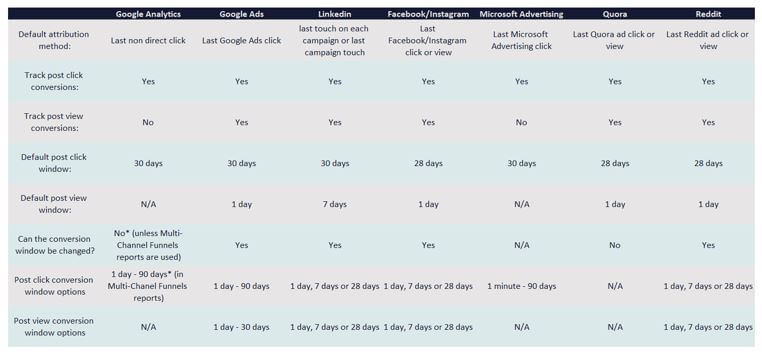Comparing Google Ads, Facebook, Instagram, Google Analytics, Linkedin, Reddit & Quora Attribution
With so many paid advertising platforms being available to marketers, there is a wealth of opportunity out there. But if you’re advertising on multiple advertising platforms and operate in a niche that has a long sales funnel, then you may end up with more than one platform taking credit for the same conversion. Another problem is that if you add up conversions from more than one advertising platform with what you’re seeing in Google Analytics, the numbers almost never match up. Explaining the reason for this, is something that many PPC agencies have to do with their clients.
To work out why conversion figures in an advertising platform may be different to what you see in Google Analytics, it pays to be aware of the differences in how each advertising platform’s conversion tracking works.
Each advertising platform may have its own name for a conversion type. For the sake of this blog, I’m going to refer to a conversion that happened after a paid click as a post click conversion. I’m going to refer to a conversion that happened after a paid ad was seen but not clicked as a post view conversion.
Google Analytics
By default Google Analytics uses a last non direct click attribution model. Also by default, the google analytics attribution window is set to thirty days. Google Analytics does not track post view conversions. The main difference between Google Analytics and the attribution models on the advertising platforms is that Google Analytics will give the conversion to the last non direct click. The conversion tracking on the advertising platforms however tend to look at the last click that the particular advertising platform received. So as long as there was a paid click during the conversion window, the advertising platform will take credit for the click regardless of whether it was the last click in the conversion journey or not. If there was more than one paid click however, then it will give the credit to the last paid click before the conversion happened.
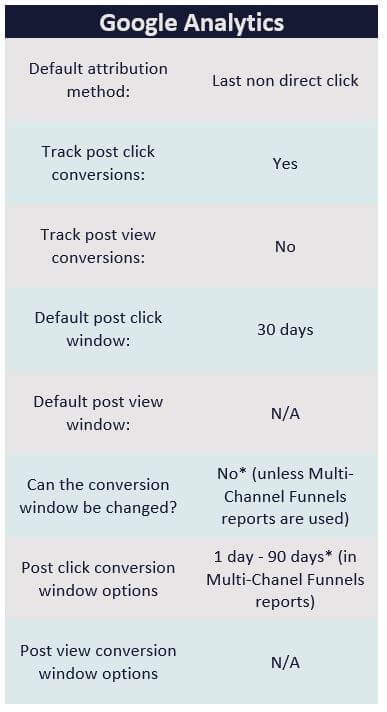
Google Ads
Google Ads uses a last Google Ads click attribution model which can be changed to either allow for attribution models to be First click, linear, Time Decay, Position Based or if you have enough conversions, a Data Driven attribution model.
By default, post click attribution is set to 30 days and the post view attribution is set to 1 day. The post click attribution can be set to any amount of days from one day to ninety days. The post view attribution can be set to any amount of days from one day to thirty days.
Google Ads has a separate column for View Through conversions which means it is easy to see the difference between post click conversions and post view conversions. What’s more, all conversions that included a post click and a Post view conversion will only be reported as a post click conversion. This means conversions are not double reported as both a post click and a post view conversion in Google Ads.
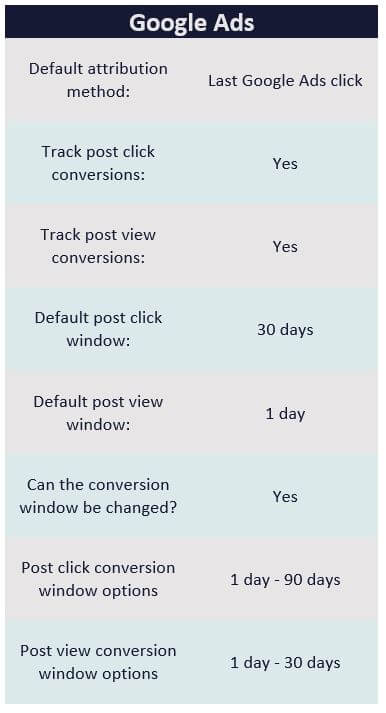
Linkedin conversion tracking
Linkedin offers either a ‘Last Touch – each campaign’ or a ‘last Touch – last campaign’ attribution model with the default post click window set to 30 days and the default post view window set to 7 days. Advertisers are able to see post click and post view conversions separately in differently columns. These are called Conversions and View Conversions in Linkedin.
Both the post click and the post view windows can be set to either one day, seven days or thirty days
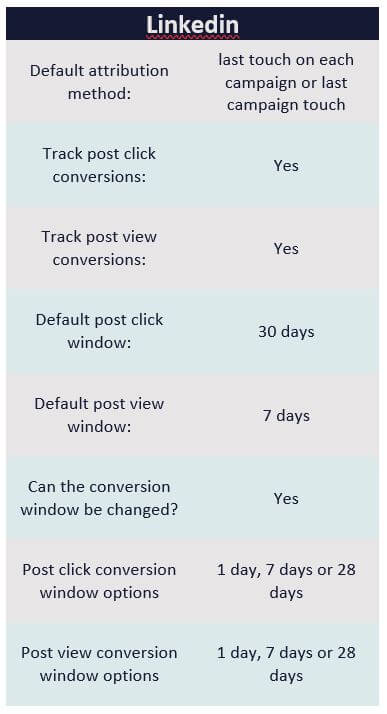
Facebook/Instagram conversion tracking
An attribution window of either one, seven or twenty-eight days can be selected for both the post click and the post view attribution types. Facebook groups post click and post view conversions together and while there is a way to segment them, it is not as straight forward as some of the other advertising platforms. To segment post click and post view conversions, you can click on ‘Window Comparison’ when customising columns.
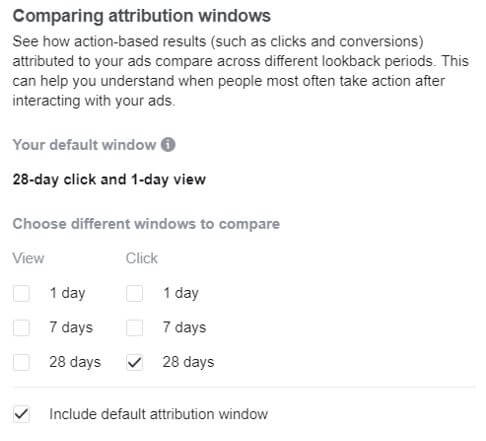
This will allow you to compare the difference between your current attribution mode and another attribution window that doesn’t contain post view conversions.
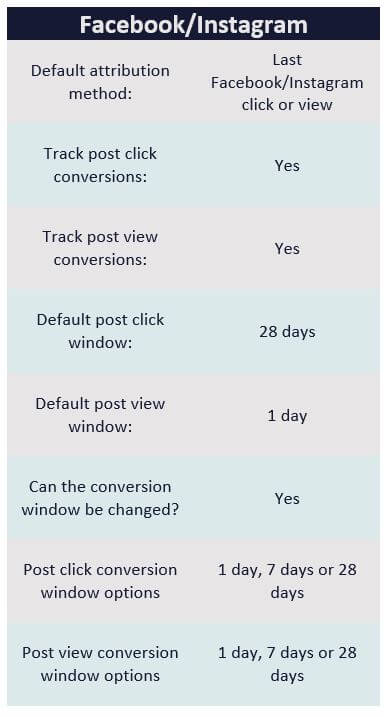
Microsoft Advertising conversion tracking
Similar to Google Ads, Microsoft Advertising (formerly Bing Ads) uses a last Microsoft Advertising click but unlike Google Ads, Microsoft Advertising does not have an option to change the attribution model. It also cannot track post view conversions. The post click window can be impressively set anywhere from 1 minute to 90 days.
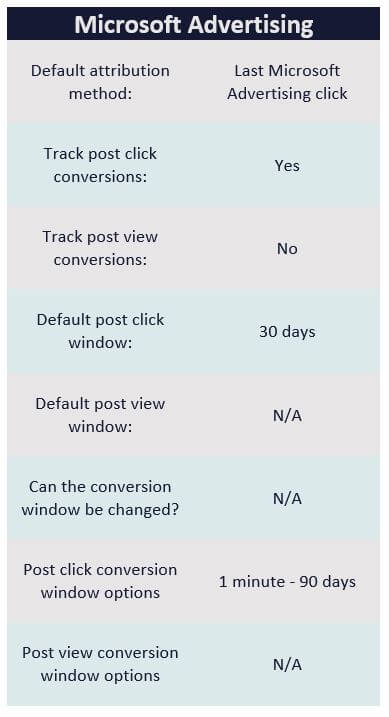
Quora conversion tracking
Quora allows for post click and post view conversions to be reported separately. Similar to Google Ads, Quora will ensure that conversions are duplicated by not reporting them as both a post click and a post view conversion. It is slightly different to Google Ads in that it will report the conversion as a post view conversion if the post view ad was the last ad to be displayed. Whereas Google Ads will not report any conversions as a post view conversion if a post click ad is present within the lookback window.
Quora has a post click window of twenty-eight days and a post view window of one day. It does not allow either the post click or the post view attribution windows to be changed.
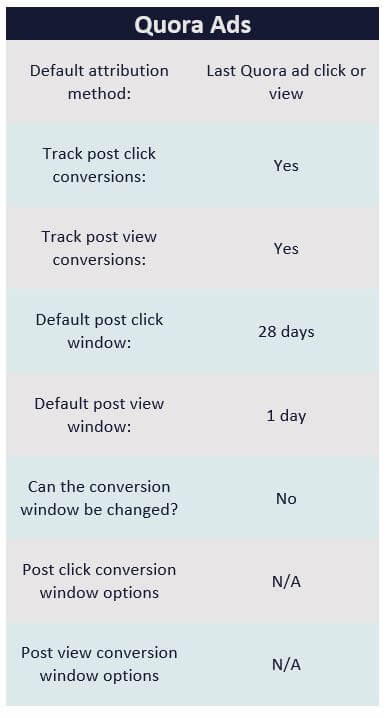
Reddit conversion tracking
Reddit has been updating its conversion tracking capabilities in the last year or so. It currently has a twenty-eight-day post click and one day post view conversion window as default. This can be changed to a one day, seven day or a twenty-eight-day conversion window for both post click and the post view conversions. Post click and post view conversions can be segmented so you can see how many post click conversions and how many post view conversions were obtained. Marketers can select whether they want to track post view conversions only, post click conversion only or whether they want to track both post click and post view conversions.
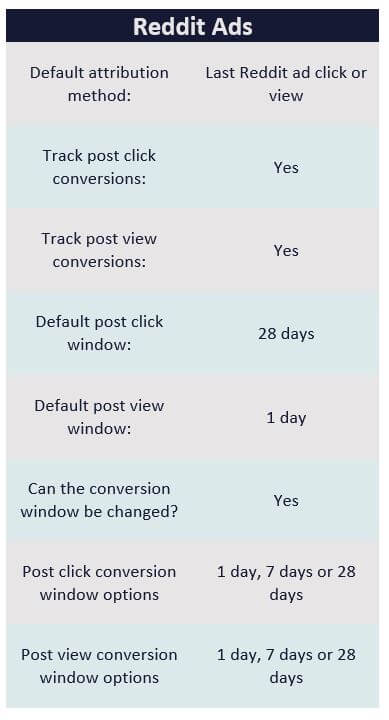
Putting it all together
For most advertisers, a post click attribution window of around one month is preferable which is why by default, twenty-eight days or thirty days is used. A smaller view through conversion window of either one day or seven days will be what most advertisers require and even though it is no longer recommended, most platforms use a variation of a last click attribution model.
